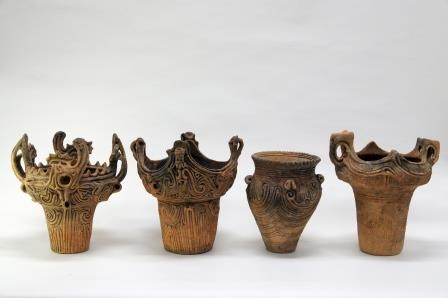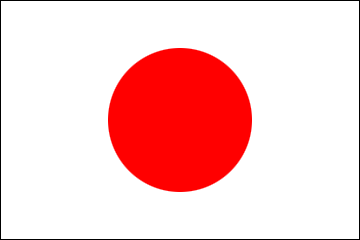FLAME POTS: HERITAGE FROM THE JOMON PERIOD 火焔土器:縄文の遺産
2016/9/30
until 12 October 2016
Open weekdays 09:30 - 17:30, closed weekends
Admission is free, but photo ID is necessary to gain entry to the Embassy.
The Embassy of Japan, 101-104 Piccadilly, London W1J 7JT
The Jōmon period (c. 14,000–c. 500 BC) began with the making of some of the oldest pottery containers in the world and subsequently gave rise to one of the greatest periods of artistic pottery in prehistoric times.
Jōmon (縄文) literally means ‘cord marked’ after the distinctive decoration found on many pottery vessels made in the archipelago between 11,000 and 2,500 years ago. From the 400 or so recognised styles of Jōmon pottery, the Flame Pots of the middle part of the Jōmon period, dating from 5300–4700 years ago, stand out for their exceptional flamboyance.
Open weekdays 09:30 - 17:30, closed weekends
Admission is free, but photo ID is necessary to gain entry to the Embassy.
The Embassy of Japan, 101-104 Piccadilly, London W1J 7JT
The Jōmon period (c. 14,000–c. 500 BC) began with the making of some of the oldest pottery containers in the world and subsequently gave rise to one of the greatest periods of artistic pottery in prehistoric times.
Jōmon (縄文) literally means ‘cord marked’ after the distinctive decoration found on many pottery vessels made in the archipelago between 11,000 and 2,500 years ago. From the 400 or so recognised styles of Jōmon pottery, the Flame Pots of the middle part of the Jōmon period, dating from 5300–4700 years ago, stand out for their exceptional flamboyance.
 Four Flame Pots from three Jōmon sites in Nagaoka ©Nagaoka City
Four Flame Pots from three Jōmon sites in Nagaoka ©Nagaoka City
The Embassy of Japan is proud to exhibit four exquisite examples of Flame Pots before these will be displayed at the British Museum, on long term loan from the city of Nagaoka. Some of the most spectacular pottery vessels of the Jōmon period were made in and around the present-day city of Nagaoka, in Niigata Prefecture, which has been the focus of human activity for over 30,000 years.
Despite the absence of potters wheels, kilns and many of the other equipment of modern ceramic technology, Jōmon potters produced works that compare well to the outstanding achievements of Japanese ceramicists through the ages. Analysis of the Flame Pots gives a fascinating insight into the lives of the people at this time, from the technologies they used at the time to the type of foodstuffs they ate, and so these pots have come to represent the contribution of Jōmon heritage to Japanese culture.
These four Flame Pots will be on display at the British Museum from 14 October 2016.
Despite the absence of potters wheels, kilns and many of the other equipment of modern ceramic technology, Jōmon potters produced works that compare well to the outstanding achievements of Japanese ceramicists through the ages. Analysis of the Flame Pots gives a fascinating insight into the lives of the people at this time, from the technologies they used at the time to the type of foodstuffs they ate, and so these pots have come to represent the contribution of Jōmon heritage to Japanese culture.
These four Flame Pots will be on display at the British Museum from 14 October 2016.
